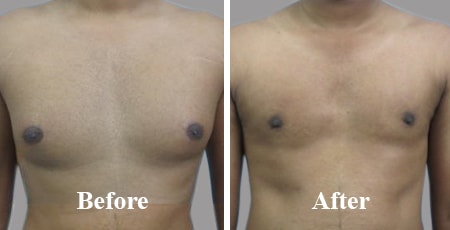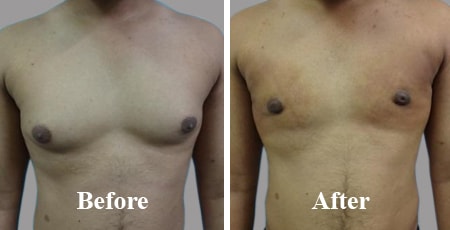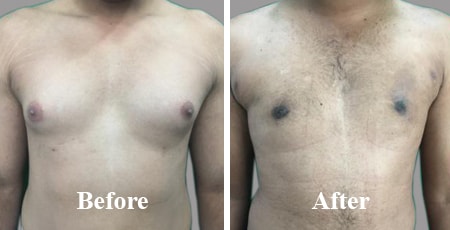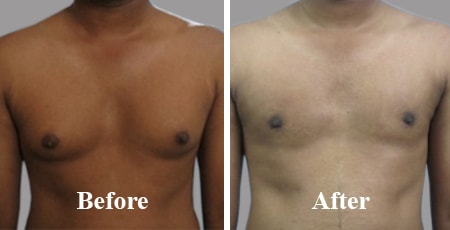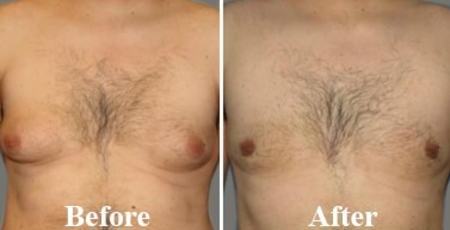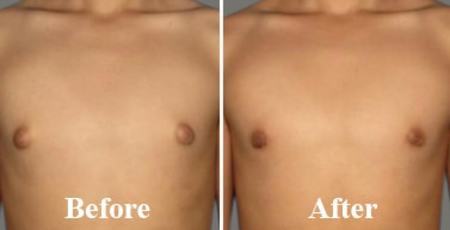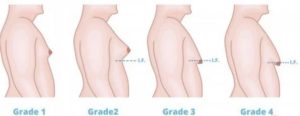Flaunt your Chest not Boobs
Call now & Get Discount: 8329060384
Best Gynecomastia Surgeon in Jaipur Get Male Breast Reduction & Gland Removal from Best Surgeon!
Gynecomastia Male Breast Reduction Clinic in Jaipur- Get the best treatment for Enlarged Male Breast, Puffy Nipples in India at very affordable cost. Complete guide on Gynecomastia, Causes, Symptoms, Cure and recovery. Find the best Male Breast Reduction Clinic in Jaipur.
Call now & Get Discount: 8329060384
Free Consultation, Best Treatment, Lowest Cost, Easy Finance Available, 100% Result
Gynecomastia Surgery Cost in Jaipur Know the Cost of Male Breast Reduction Surgery, Deals & Offers in Jaipur
Gynecomastia Cost Depends on?
The cost of Gynecomastia Male Breast Reduction Surgery depends on Surgeon’s Qualification, Operative facilities, Technique of liposuction, Gland excision needed or not, Stay Required or not, Anaesthetist Experience, Type of Compression garment & Post care facilities given to patient.
Please fill the form for exact costing of Surgery in your condition.
Contact Us
Zenith Plastic Surgery Centre
Address: 93 B, Ajmer Rd, Near DCM, Heera Nagar, Tagore Nagar, Jaipur, Rajasthan 302024
If you have questions or need additional information, please call:+91 8329060384 or use our Contact Form!
Find detailed information about Gynecomastia Causes, Symtoms, Diagnosis, Gynecomastia Grades, Candidates, Myths, Facts, Faq’s & Male Chest Reduction & Reshaping surgery in Jaipur. If you are a Doctor from Jaipur, You can request your profile on our website & If you are Gynecomastia patient you can find doctors, Ask your doubts about Male breast reduction or read the blogs. We have tried to list best Clinics, doctors & surgeons in & near Jaipur. You can fill the form & submit your contact details to fix your free consultation with one of our affiliate doctors in Jaipur. To know the approximate cost of Gynecomastia Treatment, click on - http://www.gynecomastiasurgery.co.in/gynecomastia-surgery-cost-financing/.
doctor for gynecomastia, breast doctor in jaipur, man boob surgery cost, man chest fat removal, gynecomastia, gynecomastia surgeon in jaipur, gynecomastia surgery, gynecomastia surgery cost in jaipur, gynecomastia doctor in jaipur, gynecomastia surgery low cost, gynecomastia surgery, gynecomastia treatments, man chest fat, best doctor for gynecomastia near me, male breast reduction surgery, gynecomastia near me, chest surgery cost, male breast reduction, gynecomastia cost, gynecomastia doctor, gynecomastia surgery doctor, breast surgery cost in jaipur, male chest enlargement surgery, gynecomastia surgery in sms hospital jaipur, gynecomastia surgery cost, gynecomastia treatment, gynecomastia surgery in jaipur, गाइनेकोमैस्टिया सर्जरी,
Jaipur District is a district of the state of Rajasthan in Northern India. The city of Jaipur, which is Rajasthan's capital and largest city, is the district headquarters. Being the state capital, Jaipur has a Legislative Assembly. There 13 Sub-divisions in district are: Jaipur, Amber, Bassi, Chaksu, Chomu, Mauzmabad, Jamwa Ramgarh, Phagi, Phulera, Kotputli, Sanganer, Shahpura, Viratnagar. Jaipur is also known as the Pink City of India.[6] Jaipur is located 260 km (162 miles) from the Indian capital New Delhi. Jaipur forms a part of the west Golden Triangle tourist circuit along with Agra (240 km, 149 mi). Jaipur is a popular tourist destination in India and serves as a gateway to other tourist destinations in Rajasthan such as Jodhpur (348 km, 216 mi), Jaisalmer (571 km, 355 mi) Udaipur (421 km, 262 mi). and Mount Abu (520 km, 323 mi). Jaipur is located on National Highway No.8 connecting Delhi and Mumbai. National Highway 12 links Jaipur with Kota and National Highway 11 links Bikaner with Agra passing through Jaipur. RSRTC operates bus service to major cities in Rajasthan, New Delhi, Uttar Pradesh, Haryana, Madhya Pradesh, Maharashtra, Punjab and Gujarat. Jaipur is the headquarters of North Western Zone of Indian Railways. Jaipur Railway Station is well connected to all major cities of India like Delhi, Mumbai, Hyderabad, Kolkata, Chennai, Bengaluru, Indore, Lucknow and Ahmedabad. Other stations include Gandhinagar, Durgapura, Jagatpura, Ninad Benad and Sanganer. Jaipur International Airport is in Sanganer, 10 km (6 miles) from the centre. The airport operates regular domestic services to major Indian cities including Ahmedabad, Bengaluru, Chennai, Coimbatore, Delhi, Hyderabad, Indore, Kolkata, Mumbai, Pune and Udaipur. International destinations served include Abu Dhabi, Dubai, Muscat, Singapore, Bangkok and Sharjah.
The information on this site is intended for general purposes only and is not intended to nor implied to be a substitute for professional medical advice relative to specific medical conditions or questions. The information on this website is not a guide to treatment, and it should not replace seeking medical advice from your physician. We do not warrant the accuracy, completeness, correctness, timeliness or usefulness of any information contained herein. In no event Domain.com be liable to anyone for any decision made or action taken in reliance upon the information provided through this website. The photos on this website are of models & are not intended to represent the results that every patient can expect. Surgical results vary greatly from patient to patient and are not guaranteed.
Man Boobs is another name for gynecomastia. This is the situation that arises due to the increment of excess fat tissues and glandular tissues in Male breasts. This may be occurring in one side or both the side of your chest. This lead to lower your self-confidence, especially at social places to be a shirtless. Gynecomastia is a condition that cannot be treating by exercise or by diet whereas the only option is the surgical process which is very simple and not at all risky...
Gynecomastia Causes
Man boobs can be cause number of different reasons but the main cause for gynecomastia is the development of female hormones or excess presence of estrogen in males. In The case of male, when estrogen become dominant the as a result it leads to enlargement of breast
How Is Gynecomastia Treated in Jaipur?
Vaser liposuction technique is used in jaipur to remove the both fat and glandular tissues. Sedation can be given to patient which will help you to numb the area. After that a half inches incision is made on the chest area, with the help of ultrasound energy separate the fibrous and fat tissues. A hollow tube is inserted in that incision and through that those tissues can be removed. The gland can also be surgically removed with the excess fat during this procedure.
After The Man Boobs Surgical Procedure in Jaipur
Once the man boobs remove compression garments are given to patient to wear at least one to two months as it will help you to reduce swelling and brushing. After the surgery you can return to home. There is no overstay is required. The tiny incisions will also only cause a minimal amount of scarring. After one day of your surgery you need to come for dressing that is for drain removal. The stitches can be removed after fourteen days of your surgery. Daily twice a day oil massage has to be given by patient for the fast recovery.
Best results can be seen around six weeks as swelling goes away. Photos should be taken by the doctors to show the before and after results.
What About Downtime?
There is no downtime required after the surgery as you can walk, travel immediate after the surgery. But still doctor will referred you take a rest at least for two days.
Do Fat Glands Come Back?
During the procedure 90-100% of the gland to be removed. Once the gland removed cannot come back not even the fat.
What You Can Expect
The chest will look a lot flatter and the feminine look will go away. You will also be a lot more confident at the beach or in a t-shirt. The costs will vary depending on the individual case as well as expectations.
Tags: gynecomastia surgery in Jaipur, gynecomastia surgery cost in Jaipur, gynecomastia treatment in Jaipur, Gynecomastia Symptoms in Jaipur, Gynecomastia Causes in Jaipur, Gynecomastia Before And After Surgery in Jaipur, Gynecomastia Surgery Near Me in Jaipur, Treating Gynecomastia Without Surgery, Gynecomastia Removal in Jaipur, How Much Gynecomastia Surgery in Jaipur, Gynecomastia Grades in Jaipur, Gynecomastia Cure in Jaipur, Gynecomastia Doctors in Jaipur, Gynecomastia Post Surgery in Jaipur, Gynecomastia Liposuction in Jaipur, Gynecomastia Reduction in Jaipur, Gynecomastia In Children in Jaipur, Gynecomastia Free Consultation
When a man's mammary gland enlarges so much that it looks like a woman's breast, it's called gynecomastia. Usually it affects both breasts, less often only one side. The causes for the enlargement are varied and often lead to psychological problems in the person concerned.
During puberty, many boys are affected by gynecomastia, which can be found in almost 50 percent of adolescents. It can occur even in newborns through the transmission of maternal hormones. In both cases, the breasts usually recede on their own. In old age, many men are prone to gynecomastia because of the higher levels of estrogen.
In many cases, severe obesity, chronic kidney and liver diseases, estrogen-containing drugs, and excessive consumption of alcohol or marijuana are the triggers for the disease. A breast cancer tumor is rarely responsible for gynecomastia, but hormone treatment after prostate cancer is common. Here it makes sense to remove the mammary gland at an early stage - this can often prevent overstretching and later removal of excess skin.
Before a procedure, however, the reasons for the illness should be clarified (e.g. by examining the levels of hormones in the blood) and alternative solutions such as weight loss or reducing alcohol consumption should be discussed. Often it is also a "pseudogynecomastia", a pure accumulation of fat without enlarging the mammary gland, which can be removed by liposuction.
Breast correction usually eliminates gynecomastia successfully, aesthetically pleasing and permanently. The feminine curves are removed, the breast looks masculine and natural again.
The conversation with the specialist
The prerequisite for a successful operation is a detailed discussion about the details of the operation and possible complications. Take the opportunity to clarify all important questions. Write down what you want to know. If necessary, take someone with you. If you have any questions after the interview, make another appointment or call your doctor. There should be enough time to think about it between the preliminary talk and the operation.
Before the operation, the plastic surgeon will discuss a declaration of consent with you. This contains your personal data, an explanation of the type of treatment and the possible complications discussed. With your signature you agree to the procedure and assure that you have been informed about the risks.
If there are complications or you are dissatisfied with the outcome of the procedure, follow-up operations can be carried out. In the case of "medically not indicated aesthetic operations" (SGB V § 52), the statutory health insurance is obliged to give you an appropriate share in the costs of the follow-up operations in the event of fateful complications for which the doctor was not responsible. Before the first procedure, you can insure yourself against the risk of these follow-up costs. Ask your plastic surgeon about this option.
Before the breast correction
You should not take pain relievers containing acetylsalicylic acid (e.g. aspirin) for 14 days before the operation. The blood-thinning effect delays blood clotting and can cause bleeding. Keep nicotine and alcohol consumption to a minimum before the procedure. If possible, stop smoking three to four weeks before the operation. If you are very overweight, you should reduce your weight by exercising and changing your diet before the operation.
If you take medication regularly or if you suffer from allergies (e.g. to medication, disinfectants or plasters), it is essential that you inform your doctor. Make sure you also inform him about known diseases. If you are prone to bruising or persistent bleeding after minor injuries, the plastic surgeon should rule out a coagulation disorder before the operation.
The procedure is carried out either on an outpatient or inpatient basis - in the practice of a plastic surgeon or in a clinic or day clinic. Depending on the procedure, a hospital stay of a few days can be expected during which the patient is monitored and cared for.
For minor corrections, local anesthesia with an additional sedative may be sufficient. General anesthesia is required for major surgery. It is best to discuss with your plastic surgeon which preliminary examinations are necessary and when they will be carried out. You will also have the opportunity to discuss the anesthesia with the anesthetist.
The operation
The incision during the operation can be different. An incision is made on the edge of the nipples, under the armpit or along the underbust crease. The plastic surgeon uses it to remove the excess breast tissue. If liposuction is also necessary, a cannula may be inserted through additional small incisions, which removes and aspirates the fatty tissue with constant movement. Additional incisions under the armpit or on the side of the abdomen may be necessary for this.
In particularly severe cases of gynecomastia, the skin may be too stretched after the correction to adapt to the new breast. Removing the excess skin and tightening the remaining skin can restore its natural shape.
At the end of the procedure, a drain is usually placed to facilitate the drainage of wound exudate and blood. A compression bandage will help support the new breast. The entire operation usually takes one to one and a half hours, or longer depending on the complexity.
After the breast correction
Immediately after the operation, the chest will be sore and sore for a few days. In contrast, pain medication is usually administered. The drains are usually removed on the first or second day after the operation. If sutures were not used with self-dissolving sutures, the sutures can be removed eight to ten days after the procedure. At first the scar will be red, but will fade within a few months and adapt to the surrounding skin. During the following six months, UV radiation of the scar must be prevented (e.g. sunbathing).
It is common to wear an elastic bandage so that the severe bruises and swellings heal as quickly as possible. This should be worn continuously for one to two weeks, later only at night. Nevertheless, the swelling will only subside after a few weeks, so that the final result can only be assessed after about three months.
Your ability to work is restored after a few days. Sports activities and household chores (e.g. ironing and window cleaning) should be avoided for three weeks.
In the event that gynecomastia recurs after the operation, the breast correction can be repeated. Even after the procedure, the breast should be checked regularly by a plastic surgeon.
What complications can arise?
Every operation involves risks. However, the risks of breast correction can be minimized if the operation is performed by a qualified plastic surgeon with sufficient experience. Despite the greatest care, however, as with any surgical procedure, occasional complications can occur during or after the operation.
In general, there is a risk of bruising and bleeding. Infections can lead to impaired wound healing. Blood clots can block blood vessels (thrombosis) or get into the lungs (pulmonary embolism). The administration of drugs or narcotics can lead to allergies and intolerance. If blood transfusions are necessary, an infection cannot be excluded with all precautionary measures. After the operation, numbness from pressed nerves or other damage caused by positioning may occur, but these usually subside.
Tips for choosing a doctor
You should allow yourself enough time to choose the right doctor. Be clear about what is bothering you about your appearance and what expectations you have in the operation. Also ask your general practitioner which plastic surgeon he recommends.
Choosing an appropriately trained specialist is a prerequisite for a satisfactory operation result. We urgently recommend choosing a specialist in plastic and aesthetic surgery who has many years of advanced training. Together with you, he will select the appropriate surgical method in advance and clarify the possibilities, limits and alternatives of the planned procedure.
The plastic surgeon is a recognized specialist who completed six years of advanced training after completing his medical degree. During this time he has to perform numerous operations under supervision. After this practical experience and theoretical training, the doctor must take the specialist examination at the respective state medical association. Only then does he officially receive the title of "Specialist in Plastic and Aesthetic Surgery" (the expiring title of "Specialist in Plastic Surgery" is also currently being used, the further training of which was comparable) and thus for you, the patient, clear evidence of comprehensive qualifications.
Only the title “Specialist in Plastic and Aesthetic Surgery” (or “Specialist in Plastic Surgery”) is protected. Other terms such as “cosmetic surgeon”, “cosmetic surgeon” or “aesthetic surgeon” are not protected titles and can be used by any doctor even without proven further training. They say nothing about their training or further education.
The most important information about gynecomastia
Gynecomastia, the enlargement of the mammary gland in men, is a complex disease that can have different causes: from a deficiency in male hormones, to side effects of drugs, to chronic diseases. In certain phases of life, such as puberty or advanced age, in addition to this “real”, pathological gynecomastia, an enlargement of the male breast that is regarded as “normal” can occur.
Regardless of the cause, gynecomastia is in any case a serious nuisance for the affected men: With a female breast , they feel less masculine and are ashamed to show themselves bare-chested to other people. They often exercise excessively in the hope that the chest will shrink as muscles build up in the upper body.
In most cases, however, the hoped-for success does not materialize. Non- surgical treatment of the male breast is rarely the method of choice to treat gynecomastia: If the causes of this physical change are eliminated, the breast often also recedes. For some men, hormone therapy is the treatment of choice. However, since these therapies are rarely successful, surgical treatment of the breast is often the only way to improve the quality of life for those affected. You can read more about the therapies for gynecomastia, their surgical treatment, their advantages and disadvantages, risks and the costs of breast correction for men on these pages.
Depending on age and lifestyle, a large part of the male population is affected by gynecomastia. It is one of the typical symptoms of obesity (from a BMI of 30), whereby experts also speak of a " pseudogynecomastia " in this case : In contrast to real gynecomastia, it is a fat storage in the chest area, whereas the " real ”gynecomastia is based on an increase in the mammary gland tissue. In the first case, it is advisable to carry out causal therapy by reducing the causes of excess fat by reducing the calorie intake and exercising enough. It is similar in cases where the excess breast tissue is on theSide effects of a drug or a very meat-heavy diet with the absorption of hormones that are artificially added to meat. Testosterone , known as the male hormone, can actually lead to the development of gynecomastia, as it is partially converted into estrogen in muscle and fat tissue.
For male adolescents in particular, the age-typical development of an enlarged breast - almost two thirds of all boys during puberty show temporary signs of gynecomastia - can result in extreme psychological suffering, as their own bodies deviate from the ubiquitous ideal of masculinity or because they are often the victims of teasing become. This hormonally induced change does not always completely regress after puberty. "This is where surgery can help give young men back their self-confidence," emphasizes Dr. med. Christian Köhler, head of the Clinic for Plastic Surgery Prevention Center in Switzerland.
But adult men also suffer from enlarged breasts - around 30 percent of middle-aged men are affected. With increasing age, the composition of the body also changes in favor of adipose tissue. This is why a high proportion of men are affected by gynecomastia even at an advanced age. A common reason for this is that the therapy options are not known. Even if not all of them require an operation, it can also help older men to have a more positive self-image and a more relaxed approach to their own bodies
Gynecomastia is usually harmless and therefore not dangerous for the affected man. However, there are patients who report discomfort or pain during certain activities, for example when exercising, when they are touched or when a ball hits their chest.
However, it should not be ignored that breast cancer is not only found in women , but can also occur in very few cases (less than 1 percent) in men. Men also have a small portion of glands in their breasts, even if this is usually very small. In the case of gynecomastia, however, this proportion is slightly higher. The more glandular tissue there is, the greater the risk of developing breast cancer. For this reason, a plastic surgeon should also consider the risk of breast cancer. This is especially true if there is a one-sided change in the breast.
In any case, the plastic surgeon should routinely - especially with high-risk patients - send the gynecomastia removed during the gynecomastia operation to the pathological / histological examination to be able to rule out a possible disease.
Who should be treated for gynecomastia?
"Every man who feels restricted in his quality of life due to his increased breast growth can consider an operative correction. Many hope that their enlarged breasts can be reduced through muscle training and sport . Unfortunately, this hope is only in very few cases Fulfillment - because if the breast enlargement is hormonal or genetic , muscle building cannot change the initial situation. Nevertheless, the procedure should be carefully weighed up , taking into account previous illnesses and other risk factors . "
Risks of gynecomastia treatment
WHAT ARE THE RISKS AND POSSIBLE COMPLICATIONS OF GYNECOMASTIA SURGERY?
Like all operations, the surgical correction of the enlarged male breast is not entirely risk-free. However, if it is performed by a doctor with extensive experience in the treatment and surgical correction of gynecomastia, the risks are minimal. In addition to general surgical risks such as inflammation or delayed wound healing, the possibility of an aesthetically unsatisfactory result, for example due to asymmetries or visible scars, is also relevant in the case of primarily aesthetically motivated corrections . It is also possible to enlarge the breast again after the operation.
Cost of surgical treatment for gynecomastia
The cost of a male breast reduction can vary greatly depending on the attending physician and the extent of the operation. As a rule, they are at least 2,000 euros . If the affected man is demonstrably mentally impaired by the shape of his chest, some statutory and private health insurance companies will cover the costs of the procedure or grant a subsidy. Before the operation, patients should therefore find out about any possible cost coverage.
Financing option for gynecomastia
In most cases, the patient incurs high costs in the course of gynecomastia treatment. These are not or only partially covered by the health insurance. Not everyone can pay the corresponding amount at once and therefore has to find out about suitable financing. For this purpose, the treating physicians often offer various financing options in which the costs can be covered by means of a loan. The term of the loan, the installment amount and the down payment can be varied and thus tailored to each patient individually. Thanks to this flexible type of financing, the longed-for treatment of gynecomastia no longer has to be done without.
The financing partners medipay or medical processing offer a possible financing plan.
Common questions about gynecomastia
What are the causes of gynecomastia?
In most cases, the causes of gynecomastia cannot be clearly explained. In addition to obesity (BMI over 30), the use of hormones can also be the reason for an enlarged breast. Gynecomastia caused by too high a percentage of fat in the body is also referred to as “pseudogynecomastia” because the mammary gland tissue is not increased. However, only in rare cases can the disease be clearly traced back to a cause, so that the only therapeutic option is surgical removal of the excess tissue.
Procedure for surgical correction of gynecomastia
In the case of a plastic-surgical correction of the gynecomastia, the attending physician first differentiates the individual extent of the change, which decides how to proceed. It is particularly important to thoroughly examine the glandular tissue . Increased breast tissue can be removed through an access. If the reason for the enlarged breast is a moderate excess of adipose tissue, it can be removed with liposuction .
During the operation itself, a doctor with experience and the necessary knowledge in the field of therapy for gynecomastia will ensure that the incision is as economical as possible and with few scarring . The aim is to have as few visible scars as possible and to preserve the blood circulation and sensitivity of the nipples. A resection of the mammary gland tissue in combination with liposuctionleads to very good results in many cases. The incision is made on the lower edge of the mammary gland. Since liposuction also tightens the tissue and skin, this surgical technique eliminates the need for surgical tightening, which leads to additional scars. Corrections in the anterior armpit area are also possible with this procedure. However, not all doctors have mastered a gentle, modern surgical technique, which should be considered when choosing a doctor.
The operation usually takes place under general anesthesia , but can also be performed under local anesthesia if the findings are very small. The procedure usually takes about one and a half to two hours . Patients can leave the clinic on the same day. For aftercare, it is only necessary to wear compression underwear for six weeks in order to support wound healing and achieve an optimal aesthetic result.
What should you watch out for in the follow-up care of a gynecomastia operation?
"Immediately after the gynecomastia operation, the patient is put on a bandage and a compression . The patient should then recover a little before he can leave the practice. In general, showering on the same day is still allowed, however the patient should take some backseat physically in the following two weeks. After these two weeks, light sporting activities can be resumed. Physically very strenuous movements should be avoided for a total of 4 to 6 weeks . As a rule, no strings are found after a gynecomastia operation instead, as the threads dissolve on their own. "
WHICH MEN CAN HAVE BREAST CORRECTION SURGERY?
Basically, surgical breast correction is an aesthetically motivated procedure (in which the psyche certainly also plays a major role). Men who suffer from too large a breast or from visible fat deposits in the chest area can undergo a surgical breast correction.
Any contraindications , such as previous illnesses or taking medication, should be discussed with the attending physician in advance. Men who undergo this operation should also have attainable expectations. In the case of underage patients, the consent of the legal guardian must be available. However, the procedure should not be carried out too early, but only after all those involved have discussed the actual findings and the psychological stress.
A careful balance between a "more masculine" body and the resulting improved well-being and the risks of the operation should take place.
WHICH DOCTORS DO BREAST CORRECTIONS FOR MEN?
This procedure should be performed by a specialist in plastic and aesthetic surgery . When choosing a doctor, in addition to the specialist title, which only provides an initial orientation, the surgeon's practical experience and the surgical technology, which is based on international standards, must also be taken into account. Anyone who has already performed many operations on the enlarged breast in men according to all the rules of the surgical art knows what to look out for and how to react in the event of an unforeseen course of the operation. At the same time, he can determine the most suitable individual approach.
The risk of complications is lowest with experienced, carefully working surgeons. In addition, hygiene in the clinic or practice clinic and the human factor should also play a role in the choice of the appropriate doctor.
A man's breast is often stressful for those affected. However, the man's breast can be removed in an operation in a relatively simple way. Which procedures are used for this.
Gynecomastia, also known as a man's breast, describes the benign growth of the mammary gland in men. If cancer or another underlying disease has been ruled out and gynecomastia has been unequivocally diagnosed as such, there is no health risk. On the other hand, it is the aesthetic aspect that many men find annoying with a pronounced breast. Since round breasts are more likely to be associated with femininity, many men are ashamed of their man's breasts.
Often, a general weight loss already helps to counteract a man's breast. If the body loses fat mass, it also decreases in the breasts. A complete disappearance of the male breast by means of weight reduction only works if there is pseudogynecomastia, i.e. an enlargement of the breast due to fatty tissue.
If the breast enlargement is a result of the growth of glandular tissue, weight loss is not enough to remove it. Caused by a hormone imbalance during puberty, a hormonal change in old age or the use of certain medications, the mammary gland can grow more rapidly, which does not recede easily. In some cases the glandular body can shrink again through further hormonal changes, but it often remains unchanged in the breast and provides an optical enlargement.
How can a man's breast be removed?
Plastic and aesthetic surgery offers various procedures to correct gynecomastia. The correction of the man's breast depends on the extent of the gynecomastia. However, surgical treatment is usually unavoidable. The procedure is minimally invasive or invasive, depending on the size of the glandular body.
If the man's breast is mild, the gynecomastia can be corrected by suctioning off the glandular body. As part of a one-hour minimally invasive procedure, the breast tissue is aspirated on an outpatient basis, thus reducing the size of the breast.
The so-called tumescence method is usually used. A comparatively large amount of fluid is injected into the breast tissue under the skin. The tumor solution, which consists of saline solution, anesthetics and other substances, liquefies the tissue, making it easier and more effective to suction it off in the next step. With the help of fine cannulas, the tumescent fluid, the glandular body and loosened fat cells are sucked out. The small incisions required for this are then sewn or glued and the procedure is completed.
In the case of more pronounced gynecomastia, suctioning the mammary gland is usually not sufficient. Invasive surgery to correct the man's breast may be required here. The gland is surgically removed through an incision on the edge of the areola. Like suction, this can be done under local anesthesia, but in some cases it is advisable to operate under anesthesia. Invasive surgery to correct gynecomastia can also be performed on an outpatient basis.
What happens after the surgical correction?
In order to avoid the formation of scars and the occurrence of wound healing disorders and other complications after the correction of the gynecomastia, a compression girdle must be worn for six weeks after the operation - regardless of the surgical technique chosen. This bodice reduces the mechanical stress on the tissue and thus supports the healing process. In addition, it prevents the formation of unevenness that could impair the result of the operation from an aesthetic point of view.
The downtime after surgical correction of gynecomastia is not long. The patient should take it easy for about a week after the procedure and not engage in strenuous physical activity. He is fit for business one or two days after the operation. The scars resulting from the invasive treatment method are very inconspicuous and therefore hardly visible due to their location on the edge of the areola.
Are the results of the surgery permanent?
If it was a "real" gynecomastia, which is characterized by the growth of glandular tissue, it will be permanently resolved after the operation. The breast has been permanently reduced and is shaped like a normal male breast. The growth of the breast through adipose tissue as a result of severe weight gain cannot be ruled out by the operation at a later date. Those who keep their weight, however, have nothing to fear with regard to gynecomastia.
